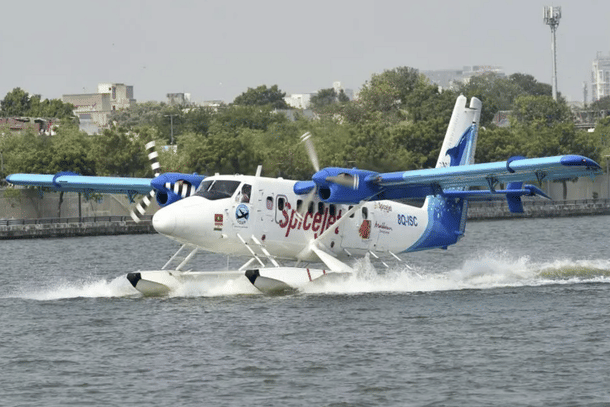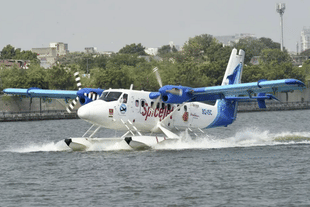Infrastructure
Seaplanes Take To Flight In Andaman And Nicobar Islands Soon, Ushering In A New Era Of Aviation In India
V Bhagya Subhashini
Sep 06, 2024, 03:57 PM | Updated 04:43 PM IST
Save & read from anywhere!
Bookmark stories for easy access on any device or the Swarajya app.


Regional airline Flybig is set to enhance connectivity in the Andaman and Nicobar Islands by launching the first-ever seaplane services in the region. This comes after the union government eased guidelines for seaplane operations.
The airline will commence flights from Car Nicobar Airport and Campbell Bay Airport, according to Flybig’s Chairman and Managing Director, Sanjay Mandavia.
The airline’s first seaplane, a De Havilland Canada Twin Otter, is expected to join its fleet by the end of October. This aircraft is suited for landing on both water and land, making it ideal for the islands’ geography.
The initiative follows an agreement between Flybig, the Airports Authority of India (AAI), and the government to promote regional connectivity and tourism in the archipelago.
Civil Aviation Minister Rammohan Naidu emphasised that seaplanes could transform connectivity in regions where conventional airport infrastructure is not feasible due to land constraints. He envisions a future where seaplanes seamlessly integrate with the existing aviation network to provide last-mile connectivity, particularly in remote regions like islands and coastal areas.
Seaplanes, the minister added, could also drive economic growth by opening new avenues for tourism, as well as serving roles in research, environmental monitoring, disaster relief, and even coastal defence.
New DGCA Rules for Seaplanes
To support these operations, the union government recently updated rules from the Directorate General of Civil Aviation (DGCA), allowing non-scheduled operators to provide seaplane services. These changes aim to boost participation in the Udan (Ude Desh Ka Aam Nagrik) regional air connectivity scheme, which had previously seen limited interest.
Key changes in the DGCA rules include the removal of the requirement for a waterdrome licence and reducing compliance requirements, simplifying the process for seaplane operators.
Additionally, commercial pilots with a commercial pilot licence (CPL) can now qualify as seaplane-rated pilots, further encouraging the development of this sector. Non-scheduled operators — those operating outside of fixed flight schedules — can now easily enter the seaplane market.
“We urge states to identify waterbodies, and we will find ways to activate them,” said Vumlunmang Vualnam, Secretary of the Ministry of Civil Aviation, at a recent event. The new guidelines also clarify the roles of various stakeholders, including state governments, seaplane operators, and the central government, as per a report by The Hindu.
Previous efforts to promote seaplane operations had limited success. The government had initially planned to connect 10 waterdromes across India under the Udan scheme. While SpiceJet launched a seaplane route from the Statue of Unity in Kevadia to Sabarmati Riverfront in Ahmedabad, the service was discontinued due to weak demand.
V Bhagya Subhashini is a staff writer at Swarajya. She tracks infrastructure developments.





